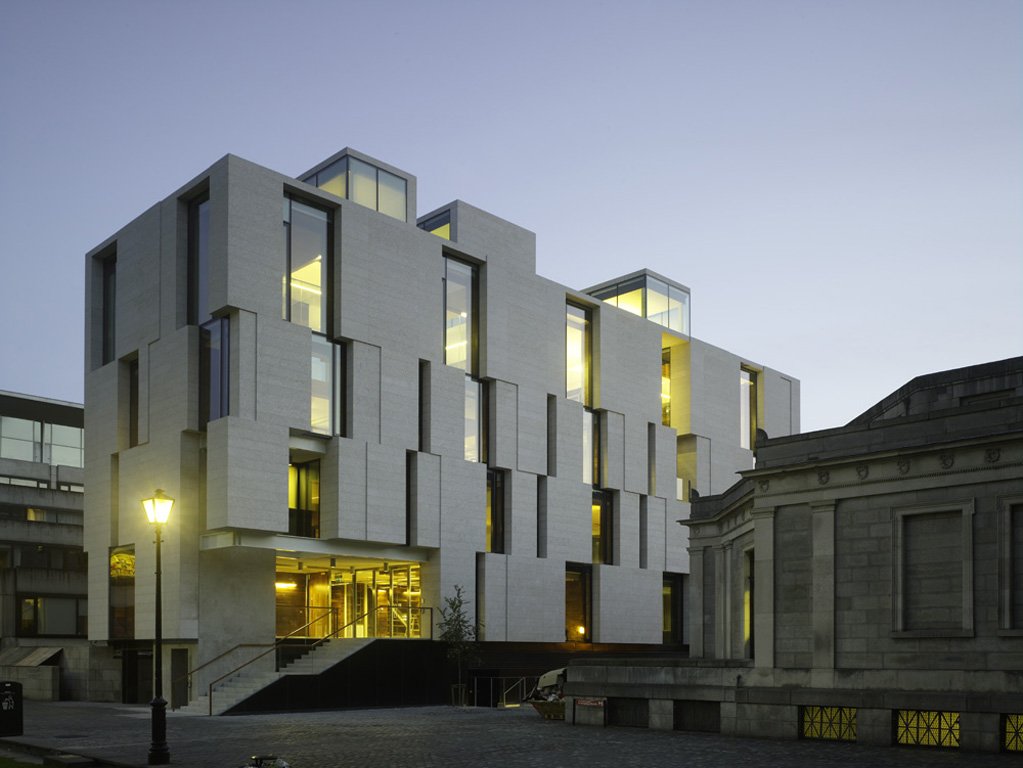On Tuesday April 19th, nine students from the School of English held an exhibition in the Trinity Long Room Hub. It featured performances, photography, readings and a film that were devised as responses to the collections of the National Museum of Ireland.
The exhibition was the culmination of a sophister course that examined the material imagination at play in modern Irish literature. The module, entitled “Irish Writing and Material Culture”, was run by Dr Julie Bates. She aimed to trace the recurrence of a group of objects through a wide range of texts in order to gain a new perspective on the profound cultural shifts that have occurred in the 20th and 21st centuries in Ireland. As part of the module, students worked on a creative project inspired by an object in the National Museum. The School of English is currently experimenting with its methods of assessments and the creative project will count as part of the students’ final grade for Bates’ module.
At the beginning of term, students participated in guided tours and handling sessions at both the Museums of Archaeology on Kildare Street and Decorative Arts and History in Collins Barracks. Bates terms these trips “an unambiguous success” and acknowledged her gratitude for the generosity and receptiveness of the museum staff. A 100-year-old replica of a lunula was even brought in from the Museum especially for the exhibition in the Hub.
Students were given free rein to produce a piece of work in response to any artefact that had captured their imagination, resulting in a diverse set of creative projects. Orla Howells opened the presentations with a series of photographs examining our relations with museums and with the past. Each photograph featured objects, such as a midwife’s bag or a teddy bear, which had come to represent an individual, and which begged the question: what would you want to be remembered by? This was followed by a dramatic monologue by Sagine Corrielus in response to a lunula which had been found in a dumpster after thieves, failing to recognise its historic value, had thrown it away.
Later, Matt Eva presented a humorous short story dealing with the trials and tribulations of a man with three faces, inspired by the three-faced Corleck Head. The next presentation, by Rosie Long Decter, discussed the absence of emigrant instruments in the Museum. It featured an audio presentation that consisted of a recording of Long Decter’s father telling her a traditional tale told at a Newfoundland kitchen party, meshed with a recording of her grandfather telling her father the same story.
This examination of that which is not exhibited was continued by Clodagh Schofield, who looked at the absence of stockings in the Museum and discussed how the stories of women and LGBT people rarely feature in national institutions. She read an excerpt from a moving short story and presented a series of accompanying photographs. This was followed by a poetry reading by Lindsay Tucker. The poems considered the objectification of death and were done in response to the Old Croghan Man bog body. Regino Paparo then presented her “Bathroom Doors of Dublin” photography collection, which traced the political nature of graffiti found in bathrooms around campus and was inspired by a piece of a wall which had been scribbled on by Thomas Clarke during the 1916 Rising. The presentations concluded with a short film by Jack Maguire, which was inspired by Clonycavan Man and looked at rituals surrounding death in this country.
The presentations were followed by a wine reception and exhibition in the Hoey Ideas Space. The strikingly unusual room worked well as a space to display the projects. Speaking to The University Times, Dr Bates said that she was “very pleased” with how the event went. It was an exciting opportunity for students to break away from traditional academic constraints and express themselves creatively. The event was a success and the Hub will continue to host the exhibition until Thursday April 21st.







